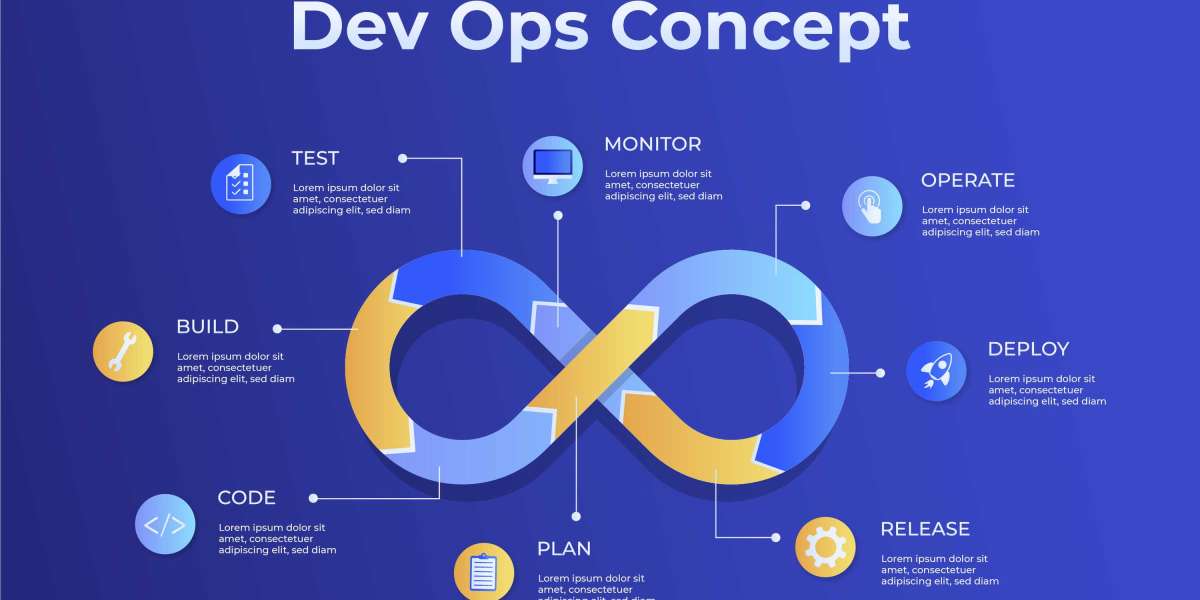Hey There! Let’s Dive into Continuous Monitoring in MLOps. Imagine you're baking a cake. You mix the ingredients, pop it in the oven, and walk away, assuming it'll turn out perfect. But wait! What if the temperature fluctuates, or the cake rises unevenly? Without keeping an eye on it, you're risking a disaster. Monitoring machine learning (ML) models is no different. You can't just deploy them and hope for the best. Continuous monitoring ensures your models stay in tip-top shape, much like how a good baker checks their cake periodically.
Why Continuous Monitoring is a Game Changer in DevOps Pipelines
So, why should you care about continuous monitoring? Well, think about it this way: ML models are like pets—they need constant attention. Over time, they can develop issues like model drift, where the predictions start to veer off course due to changes in the data. There's also the dreaded performance degradation, where a once sharp model becomes sluggish and inaccurate. And let’s not forget data quality changes that can throw a wrench in the whole operation.
In a dynamic environment like DevOps, where things move fast, continuous monitoring is your safety net. It ensures that your ML models keep performing as expected, catching issues before they spiral out of control. And trust me, nobody wants to be the one explaining why the model suddenly went haywire in production.
Key Metrics for Monitoring Machine Learning Models
The Must-Have Metrics for Keeping Your ML Models in Check
Alright, let’s get into the nitty-gritty. What exactly should you be monitoring? Here are some of the key metrics that I always keep an eye on:
- Accuracy: How often is your model hitting the bullseye? Accuracy tells you the percentage of correct predictions. But be careful—high accuracy doesn't always mean your model is doing well, especially if your data is imbalanced.
- Precision and Recall: These are your go-to metrics for understanding how well your model is distinguishing between different classes. Precision tells you how many of the predicted positives are actually positive, while recall tells you how many of the actual positives your model is catching.
- F1 Score: If you’re like me and want a balanced metric, F1 score is your friend. It’s the harmonic mean of precision and recall, giving you a single number that reflects your model's overall performance.
- Model Latency: How fast is your model making predictions? In a DevOps environment, where speed is king, high latency can be a killer. Monitoring latency ensures your models are not just accurate but also quick on their feet.
Understanding Model Drift and Data Drift: The Silent Killers
Now, let’s talk about model drift and data drift—these are like the termites of machine learning. They slowly eat away at your model’s performance without you even realizing it.
- Model Drift: This happens when the relationship between input features and the target variable changes over time. For example, if you're using a model to predict customer churn, and suddenly the factors influencing churn change, your model might start making more mistakes.
- Data Drift: This is when the data your model is receiving starts to shift. Maybe your model was trained on data from last year, but now the behavior of your customers has changed. Without monitoring, your model might become less accurate over time.
Detecting these drifts is crucial. You can use statistical tests or even set up thresholds for key metrics like accuracy or F1 score. Once you detect a drift, it might be time to retrain your model or even go back to the drawing board.
Tools and Technologies for Continuous Monitoring in MLOps
Your Go-To Tools for Keeping an Eye on ML Models
So, what tools can help you keep tabs on your ML models? There are plenty, but here are a few that I’ve found to be lifesavers:
- Prometheus and Grafana: These are like Batman and Robin in the monitoring world. Prometheus collects and stores metrics, while Grafana helps you visualize them. Together, they give you a real-time look at how your models are performing.
- KubeFlow: If you're working in a Kubernetes environment, KubeFlow integrates seamlessly, offering end-to-end ML operations, including monitoring. It’s like having a Swiss army knife for your ML needs.
- Custom Monitoring Solutions: Sometimes, off-the-shelf tools don’t cut it. I’ve seen teams build custom monitoring systems tailored to their specific needs. It might take more time upfront, but the payoff in flexibility and control can be huge.
Automating Alerts and Responses: Be Proactive, Not Reactive
Let’s face it—nobody wants to be woken up at 3 AM because a model went rogue. That’s where automated alerts come in. You can set thresholds for key metrics, and if something goes wrong, the system will notify you immediately. But why stop at alerts? You can also automate responses, like rolling back to a previous model version or triggering a retraining process.
For example, if your model’s accuracy drops below a certain threshold, you could automatically switch to a backup model while the issue is investigated. This kind of automation is crucial in a DevOps pipeline where uptime and reliability are non-negotiable.
Real-World Applications of Continuous Monitoring in MLOps
Learning from the Pros: Case Studies in Continuous Monitoring
Now, let’s look at some real-world examples. Companies like Netflix and Uber are pioneers in MLOps, and they’ve integrated continuous monitoring into their workflows with great success.
- Netflix: With millions of users worldwide, Netflix relies heavily on ML models for recommendations. They use continuous monitoring to ensure these models stay accurate as user preferences evolve. By catching issues early, they maintain a high level of personalization that keeps users hooked.
- Uber: Uber uses ML for everything from route optimization to fraud detection. Continuous monitoring helps them keep their models sharp, ensuring that drivers and passengers have a seamless experience. When they detect issues like model drift, they can quickly retrain their models to reflect current data.
These examples show that continuous monitoring isn’t just a nice-to-have—it’s a must for any organization serious about MLOps.
The Challenges in Continuous Monitoring of Machine Learning Models
Tackling the Tough Stuff: The Complexities of Monitoring ML Models
Alright, time for some real talk. Continuous monitoring isn’t all sunshine and rainbows. There are challenges, especially in dynamic DevOps environments where things are constantly changing.
- Scaling Infrastructure: As your data grows, so does the complexity of monitoring. You need to ensure that your monitoring tools can scale with your infrastructure without missing a beat.
- Evolving Data: Data is never static, and that’s a big challenge. You need to constantly update your monitoring strategies to reflect new data sources and changes in data distribution.
- New Feature Deployments: Every time you deploy a new feature, it can impact your ML models. Continuous monitoring needs to account for these changes, ensuring that your models stay reliable even as your product evolves.
Compliance and Governance: Keeping Things Above Board
In today’s regulatory environment, compliance isn’t just a box to tick—it’s a critical aspect of continuous monitoring. Whether it’s GDPR, HIPAA, or any other regulation, you need to ensure that your models are compliant throughout their lifecycle.
This means monitoring not just for performance but also for things like data privacy and fairness. For example, if your model is making biased decisions, continuous monitoring can help you catch this early and take corrective action. It’s about staying on the right side of the law while maintaining the trust of your users.
Enhancing Continuous Monitoring for ML Models
How DevOps Solutions Are Stepping Up Their Game
Now, let’s talk about how modern DevOps solutions are evolving to support continuous monitoring. The DevOps world is fast-paced, and service providers are recognizing the need for specialized tools that cater to ML models.
For instance, DevOps consulting services are increasingly offering tailored solutions for continuous monitoring. These solutions are designed to integrate seamlessly with your existing DevOps pipelines, providing real-time insights into model performance. It’s like having a personal trainer for your ML models, ensuring they stay in peak condition.
But remember, it’s not just about the tools—it’s about the strategy. Partnering with a DevOps consulting company can help you develop a comprehensive approach to continuous monitoring, ensuring that your models are always performing at their best.
Wrapping It Up: The Critical Role of Continuous Monitoring
So, what’s the bottom line? Continuous monitoring is the unsung hero of MLOps. It’s the glue that holds your ML models together, ensuring they remain effective, reliable, and compliant over time. Whether you’re dealing with model drift, data drift, or performance issues, continuous monitoring gives you the tools and insights you need to keep things running smoothly.
As we move forward, the importance of continuous monitoring will only grow. With the right strategies, tools, and partners, you can ensure that your ML models stay on the cutting edge, delivering value long after they’ve been deployed.
Frequently Asked Questions (FAQs)
1. How can I detect and address model drift in machine learning models within a DevOps pipeline?
Model drift occurs when the statistical properties of input data change, affecting the model's performance. You can detect drift by continuously monitoring metrics like accuracy and precision. Tools like WhyLabs and Evidently AI can automate this process and alert you when drift exceeds acceptable thresholds.
2. What are the essential metrics to monitor for machine learning models in production?
The key metrics to monitor include accuracy, precision, recall, F1 score, and latency. These metrics provide a snapshot of your model's ongoing performance and help ensure that it continues to meet the desired outcomes in real-time applications.
3. Which tools are commonly used for continuous monitoring of machine learning models?
Prometheus, Grafana, and tools like Arize and Evidently AI are widely used for continuous monitoring. These tools offer real-time tracking, alerting, and visualization, helping to maintain the model's performance and reliability in dynamic environments.
4. How can continuous monitoring improve the reliability of machine learning models in DevOps?
Continuous monitoring ensures that any issues like model drift, data quality changes, or performance degradation are detected early. This proactive approach allows for timely intervention, keeping models reliable and aligned with business goals throughout their lifecycle.
5. What are the challenges of implementing continuous monitoring in a dynamic DevOps environment?
Challenges include handling evolving data, scaling infrastructure, and ensuring compliance with regulations. These issues require sophisticated tools and well-defined strategies to ensure that models remain accurate, compliant, and effective in constantly changing conditions.



